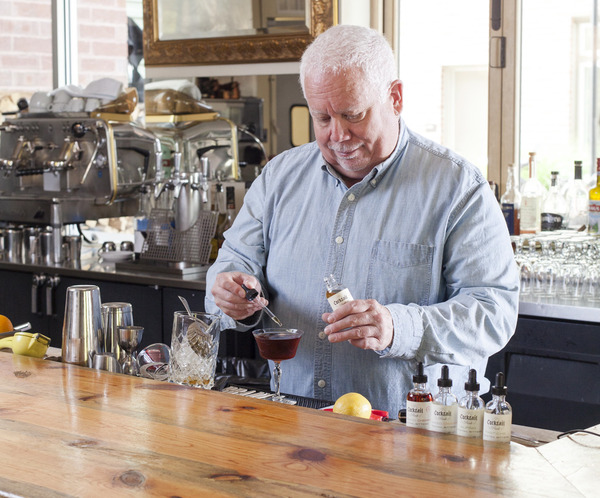The Local newsletter is your free, daily guide to life in Colorado. For locals, by locals.
Raymond Snead came to the Centennial State from Virginia in 1978 to pursue a master’s degree in computer science at the University of Colorado Boulder. Along the way, he fell in love with wine and eventually traded the rigidity of programming for the creativity of the beverage world. More recently, Snead’s focus turned to making bitters—specifically, ones that are crafted the old-school way but have a modern bent. The elixirs contain no added sugar or artificial color, and they work to balance out a drink’s sweet and sour notes. Snead officially founded Cocktailpunk in 2012, and his handcrafted bitters have developed a devoted following in bartending circles. Here, the eccentric wiz on making a splash in the cocktail world.
 5280: Your background is in computer programming. How did you arrive at making bitters?
5280: Your background is in computer programming. How did you arrive at making bitters?
RS: I’ve been in the wine business on and off since graduate school. In fact, I was employee number one when the Boulder Wine Merchant opened in the 1980s. You morph into things, and I started making bitters at home about five years ago.
It’s one thing to have a hobby and another to begin a business. How did that transition come about?
You know how it goes: Friends start wanting a bottle, and then it’s five bottles. Eventually, Allison Anderson at Frasca [Food and Wine] and Bryan Dayton at Oak [at Fourteenth] said they wanted to use them. In November 2012 Cocktailpunk became a real company, and I sought approval from the Alcohol and Tobacco Tax and Trade Bureau. Now I work out of [Comida chef-owner] Rayme Rossello’s old commissary kitchen space.
Tell me about the name Cocktailpunk.
It’s an interesting combination. It has a high and low thing—like you’re drinking a cocktail at the Ritz made by a gangster. There’s tension between the two, and that’s what’s cool about cocktails. That’s why my label uses two fonts: The block is skateboard-y, and the script
is elevated.
All of your bitters have stories behind them: You foraged the cherries for the Colorado Cherry, and the Colorado Peach is made with peaches from Morton’s Orchards. Your grapefruit version is one of my favorites—tell me about the inspiration.
When I was growing up, I had a great-uncle in Atlanta who would cut up grapefruit and sprinkle it with angostura bitters. Every other grapefruit bitters has hops in it; I was trying to be a little different, so I went with an aromatic background [like angostura]. I’ll only make it when grapefruit is in season.
What are you working on now?
I really like the idea of a limited release—something that is stone-cold bartender. Allison has a prototype cocktail that uses cumin bitters. The bitters inform the drink in a very specific way. It’s hardly suitable for normal people, but hard-core bartenders love it.
5280.com Exclusive: Make Cocktailpunk’s Cheap Detective cocktail at home.
Cheap Detective* (from Michel Dozois of Ray’s and Stark Bar, Los Angeles)
2 ounces St-Germain
1 ounce Cynar
¾ ounce Campari
2 squeezes Cocktailpunk Morning Grapefruit Bitters
grapefruit twist
Combine all ingredients (except the twist) in a cocktail shaker. Stir with ice and strain into a chilled coupe.
*The original recipe calls for a grapefruit wedge and no bitters; Cocktailpunk reworks the drink by using Morning Grapefruit bitters and garnishing with a twist.









